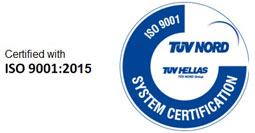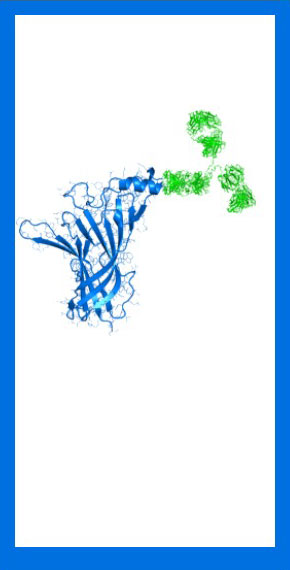
OPERATIONAL PROGRAM: “Competitiveness, Enterpreneurship and Innovation”
TITLE: Biomarkers in autoimmune neurological diseases,
NeuroMarkers, MIS 5031816
PARTNERS
Hellenic Pasteur Institute
Tzartos NeuroDiagnostics
BUDGET: 689.040 €
NeuroMarkers aims to develop new diagnostic tests where new antibodies against the neuronal nicotinic acetylcholine receptors (nAChRs) will be used as biomarkers to monitor neuroimmunological diseases.
There are muscle type and neuronal nAChRs. The muscle type nAChR is located on the postsynaptic membrane of the neuromuscular junction and mediates neurotransmission for muscle contraction. It is the major antigen in myasthenia gravis (MG), a model autoimmune disease induced by the antibodies that destroy the nAChRs. Neuronal nAChRs are distinguished in many subtypes and are widely distributed in the nervous system and in several non-neuronal tissues. They regulate neuronal excitability through neurotransmitters. Loss or dysfunction of neuronal nAChRs is associated with many neurological and neuropsychiatric diseases, such as Parkinson's, Alzheimer's, autism, schizophrenia and others.
Recently, autoantibodies to other synaptic receptors have been associated with the induction of symptoms that compose a spectrum of symptoms, characteristic of autoimmune encephalitis and related syndromes (AES). AES is the cause of> 20% of cases of encephalitis. However, many AES patients are seronegative for known antibodies, stressing the need for a systematic search for new antibodies for early diagnosis, proper treatment and prognosis of the disease.
Neuronal nAChRs are candidate autoantigens in AES, as they are important in intraneuronal brain communication, while mutations have been linked to the underlying symptoms of AES. A major role in AES is played by the hippocampus, as it is part of the limbic system, which is often damaged during the onset of the disease, whereas most of the known AES antigens are expressed in this area. Interestingly, several nAChR subunits are expressed in the hippocampus as well.
In addition, several MG patients have additional neurological symptoms that are similar to those of AES and may be due to the cross-reaction of muscle nAChR antibodies with neuronal nAChRs or the production of specific antibodies following epitope spreading.
Based on our experience with nAChRs, the identification of new autoantigens, the development of diagnostic tests and encouraging preliminary experiments, we will investigate neuronal nAChRs as autoantigens in seronegative patients with possible AES.
We suggest:
- Production of nAChR-autoantigens
- Study of the pathogenicity of autoantibodies
- Development of sensitive detection techniques for new nAChR antibodies
- Search for autoantibodies against neuronal nAChRs in AES and MG patients
- Correlation of the new antibodies with clinical symptoms and follow-up in AES
The characterization of new biomarkers and the development of new diagnostics will reduce the incidence of patients with encephalitis of unknown etiology and will contribute to proper monitoring and early immunotherapy, reduction of mortality and hospitalization costs. Furthermore, knowing the mechanism of action of specific antibodies will facilitate the development of specific therapeutic approaches.
 English
English  Greek
Greek 
